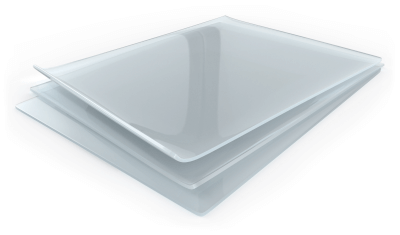What Is a Heat-Dissipating Sheet?
 A heat-dissipating sheet is a sheet that easily conducts heat (good thermal conductivity) and is sometimes called a thermal conductive sheet.
A heat-dissipating sheet is a sheet that easily conducts heat (good thermal conductivity) and is sometimes called a thermal conductive sheet.
Resin materials such as silicone and polyolefin are often used for the sheets, and some sheets contain fine metal powder called metal filler to enhance thermal conductivity. Recently, heat-dissipating sheets made of carbon, commonly known as carbon fiber-based sheets, are also on the rise.
When you want to insulate electrically while maintaining thermal conductivity, a fine ceramic powder called ceramic filler can be added to provide electrical insulation.
Applications of Heat-Dissipating Sheets
Heat-dissipating sheets are not only used in personal computers and home appliances but also in a wide range of products, such as analyzers, etc. In addition to electronic components that generate a lot of heat, such as CPUs, heat-dissipating sheets are also used to raise the temperature of objects that are uneven, taking advantage of their soft characteristics.
Heat-dissipating sheets are not only directly attached to the object to be dissipated and dissipate heat into the air through the heat-dissipating sheet, but are also used to cool the object efficiently by being attached between the substance to be dissipated. A metal heat sink, such as aluminum or copper, which has high thermal conductivity, is used.
Heat-Dissipating Sheet Principle
In addition to heat-dissipating sheets, other devices for heat dissipation include heat sinks, heat pipes, and heat-dissipating blocks, which are mainly made of metal and have higher thermal conductivity than heat-dissipating sheets. However, because they are made of metal and are hard, they do not adhere well to the object to be heated, and the air between them may cause poor heat conduction.
Heat dissipating sheets can improve the adhesiveness with the object to be dissipated, so it can be used not only by itself but also between a metallic heat dissipating device and the object to be dissipated to improve the efficiency of heat dissipation.
In addition to heat-dissipating sheets, there is also heat-dissipating grease that improves adhesion. Since heat-dissipating grease adheres to fine surface irregularities, no air layer is allowed to enter, resulting in high thermal conductivity. However, grease is subject to large variations in thickness and thermal conductivity. Heat-dissipating sheets, on the other hand, are simply applied. Therefore, there is no variation in thickness, and the thermal conductivity is stable.